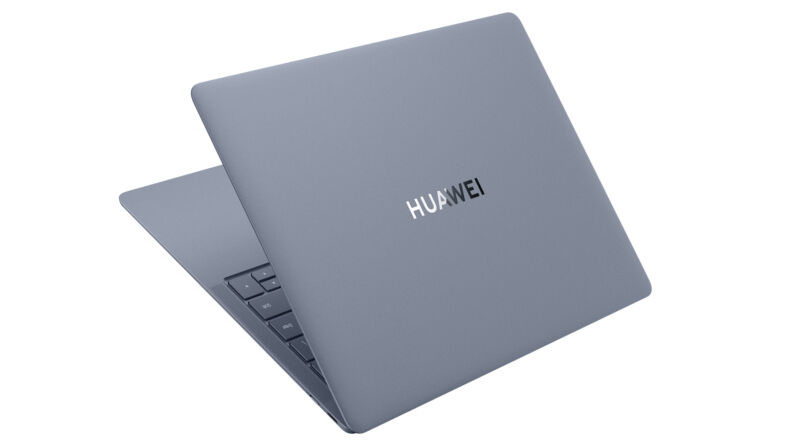More Arm laptops? —
Huawei’s phone division has moved on, but laptops will suffer without Intel.

Enlarge / Huawei’s Intel-powered Matebook X Pro has drawn criticism from US China hawks.
Huawei
The US crackdown on exports to Huawei now includes even stronger restrictions than the company has already faced. The Financial Times reports that Intel and Qualcomm have had their Huawei export licenses revoked, so Huawei will no longer be able to buy chips from either company.
The export ban has been around since 2020 and means that any company wishing to ship parts to Huawei must get approval from the government on a case-by-case basis. Sometimes these come with restrictions, like Qualcomm’s license, which allowed it to ship smartphone chips to Huawei, but not “5G” chips. That led to Qualcomm creating special 4G-only versions of its 5G chips for Huawei, and the company ended up with 4G-only Snapdragon 888 phones in 2021.
Since then, Huawei has been working on its own Arm chips from its chip design division, HiSilicon. In April, the Huawei Pura 70 smartphone launched with an in-house HiSilicon Kirin 9010 SoC made at SMIC, a Chinese chip fab that is also facing export restrictions. With what is probably still a 7 nm manufacturing process, it’s more of a 2020 chip than a 2024 chip, but that’s still fast enough for many use cases.
Assuming HiSilicon can make enough smartphone chips, the loss of Qualcomm chips isn’t a huge deal right now. Qualcomm seemed to know Huawei has moved beyond it, too, saying in a recent SEC filing, “We do not expect to receive product revenues from Huawei beyond the current calendar year.” Huawei is roaring back to life in the Chinese smartphone market, thanks to HiSilicon chips and preferences for locally made goods.

Huawei’s new laptop looks thin, light, and premium.
Huawei
Intel is going to be a bigger problem and was probably the reason for this latest export change. Intel has controversially had a license to ship Huawei laptop chips since 2020, so Huawei’s laptop business hasn’t been hurting much. Just in April, the 2024 Huawei Matebook X Pro launched with Intel’s latest “Meteor Lake” Core Ultra 9 Processor. It looks like a top-tier laptop, with a 14-inch,120 Hz OLED display, fingerprint reader, all the latest Wi-Fi connectivity, Windows 11 (Microsoft also has approval), and an aluminum body. Thanks to the Intel chip, it also has much-hyped “on-board AI processing.”
Shortly after launch, Reuters reported that Republican lawmakers were unhappy about Intel’s involvement with Huawei’s premium laptop, particularly because of its ability to enable nebulous “AI” features. The US recently passed new restrictions on shipping AI chips to China, but that was around more serious Nvidia AI server chips like the H200, which powers most of the generative AI industry. The hype around AI also means most consumer gear comes with some kind of “AI” marketing angle nowadays, and apparently that was enough to send lawmakers back to the drawing board.
If it feels like you’ve heard of a thousand Huawei export ban expansions that don’t seem very effective, you’re not alone. That Reuters report quotes Congressman Michael McCaul (R-Texas) with the same feeling: “These approvals must stop. Two years ago, I was told licenses to Huawei would stop. Today, it doesn’t seem as though the policy has changed.” The policy has changed, like when new licenses stopped being issued in 2023, but that apparently didn’t involve revoking existing licenses. Profit-first US companies are fighting these bans every step of the way, since a Huawei contract can represent millions of dollars. Huawei can also see all of this coming and is doing its best to adjust.
Assuming this latest restriction finally does the trick, with no Intel chips, Huawei’s laptop business will surely suffer once it runs out of its current stockpile. With ARM laptops becoming more and more popular, though, maybe the next step for Huawei’s laptop division is a HiSilicon laptop. Such a laptop would probably be very slow, but it would be better than nothing.